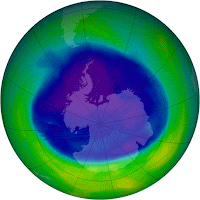During the last half century has increased dramatically, primarily energy consumption. If the trend continues until 2030. year will need another planet.
INVESTIGATION World Fund for Nature shows that humanity has for years not living in accordance with the possibilities. During the last half century has increased dramatically, primarily energy consumption. If the trend continues until 2030. year will need another planet!
Negative trends exist in multiple "fronts": on average, each resident spends one planet and a half times more than what nature can provide him. In industrialized countries the consumption is several times higher.
Then, one billion people lack drinking water. Since the seventies, then, in the world, a third, reduced the strength of the 2500 observed species in the tropics reduction is as high as two thirds! Seventy percent of all fish species endangered due to over-catch.
If the area of the country was divided fairly and according to what nature can provide, each person would have a useful area of 1.8 global hectares. Since the seventies, however, consumption of humanity greatly exceeds the annual biocapacity countries to use 2.7 global hectares per capita. It is one and a half times more than what nature can provide.
In the last half century has drastically increased primarily energy consumption. It is growing rapidly and continues in countries such as China, India, Brazil and Russia.
- To meet the demand for food, energy and other natural resources is already practically need a different planet - said Eberhard Brandes from the German branch of the World Fund for Nature. - The prosperity in the developed world has paid the biological richness of other parts of the world, among others, tropical regions.
This is reflected in the human environment - in tropical areas the numbers of species, which are monitored, reduced by 60 percent in the moderate climate of 29 percent. Branders also showed a photograph - of the tropical forest in Sumatra, was set up camera-trap, which was supposed to save the tiger. The photograph shows bulldozer which clears a forest ...
How much who have
Especially luxurious living in the United Arab Emirates, where everyone has ten acres, and "belongs to him," and on the planet every 1.8 acres. Followed by Denmark, Belgium and the United States. Germany has five global hectares somewhere in the middle. On the back of East Timor, Bangladesh and Afghanistan with 0.5 global hectares. So a man already consumed by half biocapacity more than what is available. In addition, most developed countries live at the expense of underdeveloped countries and rapid development.
INVESTIGATION World Fund for Nature shows that humanity has for years not living in accordance with the possibilities. During the last half century has increased dramatically, primarily energy consumption. If the trend continues until 2030. year will need another planet!
Negative trends exist in multiple "fronts": on average, each resident spends one planet and a half times more than what nature can provide him. In industrialized countries the consumption is several times higher.
Then, one billion people lack drinking water. Since the seventies, then, in the world, a third, reduced the strength of the 2500 observed species in the tropics reduction is as high as two thirds! Seventy percent of all fish species endangered due to over-catch.
If the area of the country was divided fairly and according to what nature can provide, each person would have a useful area of 1.8 global hectares. Since the seventies, however, consumption of humanity greatly exceeds the annual biocapacity countries to use 2.7 global hectares per capita. It is one and a half times more than what nature can provide.
In the last half century has drastically increased primarily energy consumption. It is growing rapidly and continues in countries such as China, India, Brazil and Russia.
- To meet the demand for food, energy and other natural resources is already practically need a different planet - said Eberhard Brandes from the German branch of the World Fund for Nature. - The prosperity in the developed world has paid the biological richness of other parts of the world, among others, tropical regions.
This is reflected in the human environment - in tropical areas the numbers of species, which are monitored, reduced by 60 percent in the moderate climate of 29 percent. Branders also showed a photograph - of the tropical forest in Sumatra, was set up camera-trap, which was supposed to save the tiger. The photograph shows bulldozer which clears a forest ...
How much who have
Especially luxurious living in the United Arab Emirates, where everyone has ten acres, and "belongs to him," and on the planet every 1.8 acres. Followed by Denmark, Belgium and the United States. Germany has five global hectares somewhere in the middle. On the back of East Timor, Bangladesh and Afghanistan with 0.5 global hectares. So a man already consumed by half biocapacity more than what is available. In addition, most developed countries live at the expense of underdeveloped countries and rapid development.











